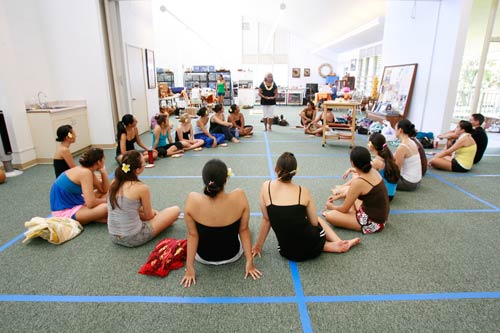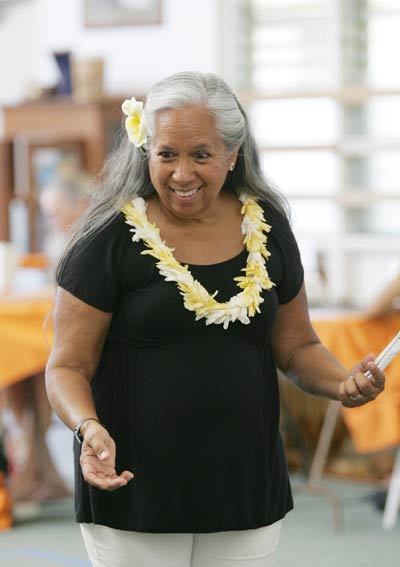Kumu hula Mapuana de Silva: Keeping traditions alive

Kumu Hula Mapuana de Silva spoke to members of Halau Mohala 'Ilima as they prepared for the Merrie Monarch on Saturday.

Kumu Hula Mapuana de Silva spoke to members of Halau Mohala 'Ilima as they prepared for the Merrie Monarch on Saturday.


Every year, with every dancer, skirt and lei in place, kumu hula Mapuana de Silva’s Halau Mohala ‘Ilima makes a strong showing at the Merrie Monarch Festival.
This is the 33rd consecutive year de Silva is bringing her halau to the prestigious event, which is unusual since halau often take breaks because of the demanding preparation necessary.
But for de Silva, it isn’t so much about the competition as it is about teaching the pillars of hula to her haumana (students) year-round, with Merrie Monarch as a part of that mission.
Every year she returns to the festival is part of an ongoing journey.
“Every single year is significant,” she said. “Every single dancer is significant.”
With 14 weekly classes for some 300 students, including women, men, boys and girls, de Silva’s calendar is full.
Don't miss out on what's happening!
Stay in touch with breaking news, as it happens, conveniently in your email inbox. It's FREE!
“We teach traditional hula the way it was taught to me, with the values of the elders as they shared it with me,” de Silva said.
De Silva’s work as a kumu hula is to instill these values in her students and to teach the dances and chants as she learned them so they will live on in future generations.
This includes a repertoire of certain mele as well as chants that celebrate Hawaii’s land and people, and a body of knowledge that form the foundation for hula. De Silva’s halau also teaches love, reverence, discipline and commitment to excellence through hula.
Once that foundation has been established, then you can be creative, she says. But that creativity has to start with a strong foundation.
As de Silva says: “Hula isn’t a supermarket where you pick and choose what you want to do and what you want to teach. You have to teach it at the right time, to those who are ready, and you have to teach it the way it was given.”
Only certain students, when they are ready, will learn to dance with an ipu heke (two gourds joined together and used to keep rhythm) or puniu (knee drum), she said. Students must also earn the right to make a lei hulu (feather lei) for hula.
Hula requires commitment and a level of dedication. For many students, it eventually becomes a way of life.
In a testament to the halau’s work, 31 former graduates in the last three decades have become kumu hula and 130 are olapa (experienced dancers).
The dancers are from all walks of life — teachers, lawyers, university students, police detectives, nurses and small-business owners — who become keepers of the culture.
De Silva graduated as a kumu hula from Maiki Aiu Lake in 1975. She opened Halau Mohala ‘Ilima a year later, continuing her studies under other mentors, including Lani Kalama, Sally Wood Naluai and Pat Namaka Bacon.
“One of the important reasons to enter Merrie Monarch is so people around the world will know what this tradition of hula is,” de Silva said. “It’s what I learned and it’s my hula genealogy.”




